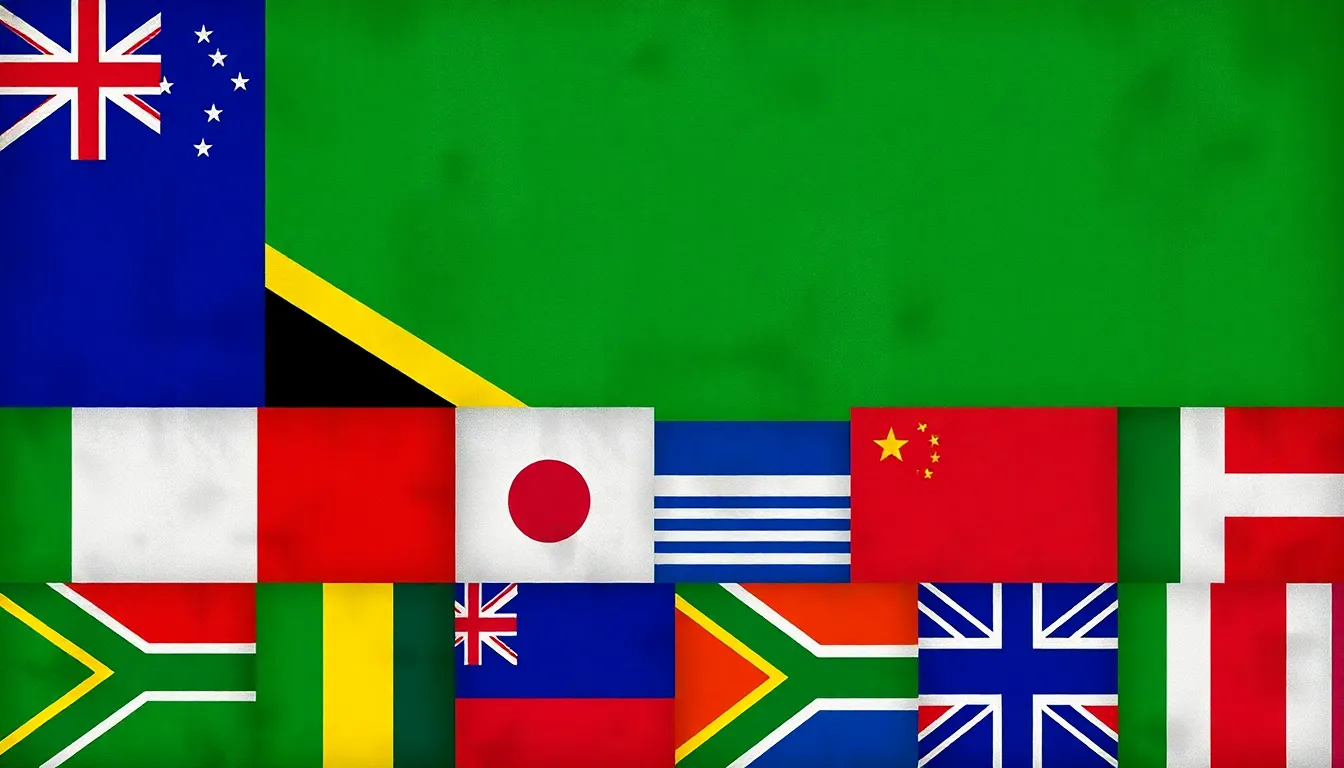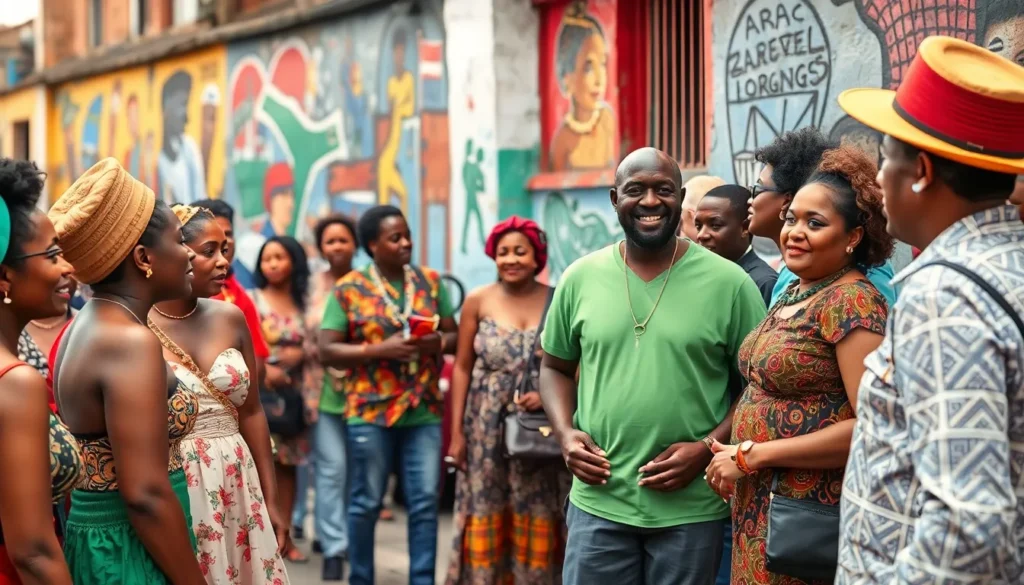South Africa is a vibrant tapestry of cultures, and its languages reflect that diversity. With 11 official languages, it’s like a linguistic buffet where everyone can find something they love. From the rhythmic clicks of Xhosa to the melodic tones of Zulu, each language adds its own flavor to the nation’s identity.
Table of Contents
ToggleOverview of Languages in South Africa
South Africa showcases an impressive linguistic landscape with 11 official languages. English serves as a commonly used language for business and government, facilitating communication across diverse ethnic groups. Afrikaans, derived from Dutch, is spoken by a significant population, primarily in the Western Cape.
Xhosa, characterized by its unique clicking sounds, boasts a rich oral tradition and is widely spoken in the Eastern Cape. Similarly, Zulu, known for its rhythmic tones, has a substantial number of speakers in KwaZulu-Natal. These languages not only reflect cultural heritage but also unite the nation.
Other official languages include Sesotho, Setswana, and Sepedi, each representing the rich history of their respective communities. Sesotho is particularly known for its complex grammar and is prominent in the Free State. Setswana, on the other hand, has gained recognition in various professional domains. Sepedi, spoken predominantly in parts of Limpopo, highlights the cultural significance of its speakers.
Less widely spoken languages such as Tshivenda, Xitsonga, and English dialects add to South Africa’s linguistic diversity. Though they have fewer speakers, each contributes to the nation’s multicultural identity. The recognition of all these languages in the constitution guarantees their use in education and public life, fostering inclusivity.
In essence, the multitude of languages in South Africa serves as both a testament to the country’s vibrant history and an essential tool for the ongoing dialogue among its people.
Official Languages of South Africa

South Africa’s rich linguistic diversity is evident in its eleven official languages. Each language reflects cultural heritage and plays a crucial role in national identity.
Understanding the Eleven Official Languages
Xhosa features unique click sounds, contributing to its distinctiveness. Zulu captivates with its melodic expressions, enhancing its popularity among speakers. Afrikaans, with roots in Dutch, serves as a primary language for many in the Western Cape region. English primarily functions in business and government, facilitating communication across diverse cultures. Sesotho stands out with its intricate grammar and literary contributions, whereas Setswana maintains professional status in various sectors. Sepedi holds cultural importance within Limpopo’s communities. Less commonly spoken languages like Tshivenda and Xitsonga still carry significant cultural value, enriching the nation’s tapestry. Recognition of all languages in the constitution promotes their usage across education and public life.
Language Distribution and Usage
Language distribution varies significantly throughout South Africa. English remains prevalent in urban centers, often used in business communications. Afrikaans is predominantly spoken in the Western Cape and has seen resurgence among younger generations. Xhosa and Zulu flourish in the Eastern Cape and KwaZulu-Natal, respectively, where cultural practices thrive. Sesotho is often spoken in Free State and also carries weight in Lesotho, while Setswana predominates in the North West Province. Sepedi users primarily inhabit Limpopo, which preserves their cultural narratives. Regions with fewer speakers of Tshivenda and Xitsonga still celebrate these languages through festivals and cultural events, ensuring their continuity.
Indigenous Languages of South Africa
South Africa is home to a diverse range of indigenous languages. This linguistic variety enriches the cultural tapestry of the nation.
Major Indigenous Language Families
Nguni, Sotho-Tswana, and Venda form the primary language families in South Africa. Nguni languages include Xhosa, Zulu, and Swazi. These languages feature distinctive click consonants, contributing to their unique sound. Sotho-Tswana encompasses Sesotho and Setswana, known for their cultural significance and historical roots within their communities. Venda includes Tshivenda, which has a rich oral tradition. Languages from these families play crucial roles in regional identity and cultural practices.
Preservation of Indigenous Languages
Efforts to preserve indigenous languages remain vital in South Africa. Government initiatives promote these languages in education and public life. Community programs aim to document and teach indigenous languages, ensuring transmission to future generations. Cultural festivals celebrate linguistic diversity, allowing speakers to share their heritage. Public campaigns raise awareness about the importance of multilingualism. These combined efforts enhance the visibility and usage of indigenous languages across the nation.
Impact of Language on Culture and Identity
Language profoundly influences culture and identity in South Africa. With 11 official languages, South Africa’s linguistic diversity shapes social interactions and fosters individual identities across communities.
Language and Apartheid
During apartheid, the government enforced policies that privileged certain languages while suppressing others. English and Afrikaans dominated state institutions, marginalizing indigenous languages like Xhosa and Zulu. This disparity fueled cultural resistance among speakers of these languages. They used their native tongues to preserve traditions and express their opposition to oppressive policies. As a result, languages became symbols of identity, resilience, and unity, fostering a sense of belonging among oppressed communities.
Contemporary Cultural Expressions Through Language
Today, language serves as a vibrant medium for cultural expression. Artists and writers utilize indigenous languages to convey their stories and experiences authentically. Music, poetry, and prose in languages like Xhosa and Sesotho reflect the rich heritage of their speakers. The resurgence of interest in these languages among the youth showcases a growing appreciation for cultural roots. Furthermore, events celebrating linguistic diversity emphasize the importance of multilingualism in fostering social cohesion and understanding.
South Africa’s linguistic diversity is a cornerstone of its cultural identity. With 11 official languages, each one enriches the nation’s tapestry of history and community. The coexistence of languages like Xhosa, Zulu, and Afrikaans showcases the country’s commitment to inclusivity and cultural preservation.
As South Africans embrace their multilingual heritage, they foster a deeper understanding and appreciation of one another. The ongoing efforts to promote and protect indigenous languages ensure that future generations will continue to celebrate their rich cultural roots. This vibrant linguistic landscape not only enhances social cohesion but also serves as a powerful medium for artistic expression and cultural dialogue.




